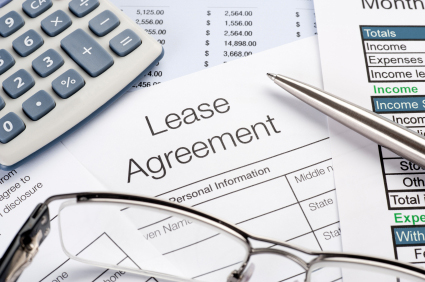Yes No
Share to Facebook
Is a Tenant Liable For Minor Daily Life Damage?
Tenants Are Not Required to Pay For Damage From Normal Everyday Living.
Similar Questions About Liability for Damage By Tenant Include:
- When a Tenant Is Moving Out, Does the Tenant or the Landlord Pay for Normal Wear and Tear?
- Who Pays For the Damage From Everyday Living?
- Does the Landlord or the Tenant Pay to Repair the Normal Living Damage?
- Does the Tenant or Landlord Pay for Damage Caused By Normal Wear and Tear?
- Is Wear and Tear of Normal Living Considered Undue Damage and Who Pays to Fix It?
- Who Pays to Repair Damage Due to Normal Wear and Tear? Landlord or Tenant?
- Can a Tenant Be Sued For Common Wear and Tear Damage?
Understanding That a Tenant Is Responsibile For Damage Only If Unduly Caused
 Over time, regular daily life activities result in normal wear and tear which is an expected occurrence and is beyond the responsibility of tenants. Accordingly, the cost of repairing normal wear and tear is an obligation of the landlord and without liability upon the tenant. Simply said, if damage occurs which is regular to damage normal to daily living, then the tenant is without blame. The landlord bears the duty and cost to repair what is normal such as worn carpet, holes from nails used to hang pictures, paint scuffs and minor chips here and there.
Over time, regular daily life activities result in normal wear and tear which is an expected occurrence and is beyond the responsibility of tenants. Accordingly, the cost of repairing normal wear and tear is an obligation of the landlord and without liability upon the tenant. Simply said, if damage occurs which is regular to damage normal to daily living, then the tenant is without blame. The landlord bears the duty and cost to repair what is normal such as worn carpet, holes from nails used to hang pictures, paint scuffs and minor chips here and there.
The Law
Defining Undue Damage
Understanding what is "due damage" requires objective review of what is normal wear and tear given nature of the tenancy. For example, a worn carpet after only one year of tenancy by a single person may be undue damage; however, a worn carpet after ten years of tenancy by a family of with four children may be, or should be, fully expected. The necessity to review damage based on the circumstances and context of the tenancy arose in the case of Doucette-Grasby v. Lacey, 2013 CanLII 95661 which said:
43. Despite any provisions in a lease such as are contained in Exhibit 1, the original lease in this case, a residential tenant is responsible for the repair of undue damage to the rental unit caused by the willful or negligent conduct of the tenant or persons she permits in the premises. (Residential Tenancies Act, 2006, S.O. 2006, c. 17, s. 34) A tenant is not required to return the premises to the state they were in at the beginning of the tenancy. A tenant is not liable for anything beyond ordinary wear and tear. A tenant is responsible for undue damage.
44. The use of the term undue damage implies that there exists a concept of due damage. Due damage in my view includes ordinary wear and tear, and other things that any reasonable tenant would do while living in the house: hang a few pictures, rub up against the walls at times.
45. Moreover, paint jobs do not last forever. Paint gets worn off by traffic, it gets marred by the ordinary activities of daily living, it gets dirty and darkens from smoke or kitchen fumes, or it fades in sunlight. The need to paint a house after at least 2.5 years of tenancy, as in this case, 1.5 years by the defendant and at least 1 year by the previous tenant, does not itself prove undue damage. Indeed, it is in my opinion rather high-handed of the plaintiffs to demand a full interior paint job of the defendant when they didn’t even touch the place up before she moved in. I appreciate that they have tried to exclude from the claim problems that existed before she moved in. But they didn’t in their evidence exclude them all. It is obvious to me that the two emails sent by Magnum before and after the defendant moved out were sent without regard to the documented condition of the house when she moved in. Just about every room needed to be patched and painted when the defendant moved in, but she didn’t insist on that and it wasn’t done. And the plaintiffs should hardly be surprised if they find that they need to paint the place after every two tenants.
Valuation Involves Compensation Without Betterment
Additionally, it is notable that where a tenant is deemed responsible for damage, the tenant should be responsible only for the cost to repair the damage to a state similar in quality, condition, and useful life, as existed prior to the damage. The tenant is without a responsibility to provide a betterment or improvement to the landlord. This principle was explained in the cases of C.O., et al v. E.H., TSL-37462-13 (Re), 2013 CanLII 50985 as well as C.P., et al v. L.D., CEL-71015-17 (Re), 2017 CanLII 93872 wherein it was said:
4. The Tenant’s argument raises the issue of betterment. The purpose of compensation is to put the Landlords in the position they were before the damage and not to make them better off. The Landlords will not be receiving a new floor in the sense of having the boards replaced. The floor will be refurbished and the sanding involved will actually reduced the useful life of the hardwood floor. Nonetheless, the best approach to the issue is to focus on “the reasonable cost of repairing the damage”. The damage cannot be repaired without sanding and finishing the living room and kitchen area and that is what the estimates obtained by the Landlords are for. Had the damage not occurred, the Landlords could have waited for years before refinishing the floor. They do not have to refinish the floor because of minor scratches. I find the lower estimate is the reasonable cost of repairing that damage because the Tenant should be responsible for the cost of an adequate repair job and not the best job, however expensive. Thus, The Landlords will incur costs of $2,768.50 to repair the damage. In any event, when taxes are factored in the quotes are not far apart.
35. The reason depreciation is calculated in orders is to address the issue of betterment that might arguably apply when compensation is awarded for something new that replaces something damaged. The purpose of compensation is to put landlords in the same position they were before the undue damage occurred and not to make them better off.
Summary Comment
A tenant is without liability for wear and tear that happens due to daily life activity. Accordingly, when a tenant moves out, the landlord is responsible to make repairs for the minor damage that is expected. Wear and tear that occurs normally is viewed as due damage and the tenant is without blame.


